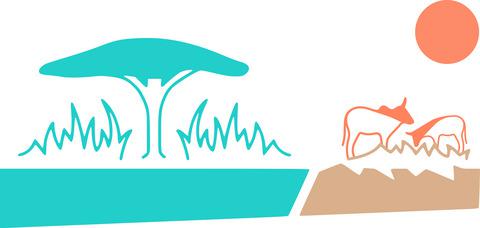当前位置:
X-MOL 学术
›
Appl. Veg. Sci.
›
论文详情
Our official English website, www.x-mol.net, welcomes your
feedback! (Note: you will need to create a separate account there.)
Savannah trees buffer herbaceous plant biomass against wild and domestic herbivores
Applied Vegetation Science ( IF 2.0 ) Pub Date : 2020-01-16 , DOI: 10.1111/avsc.12472 Stuart William Smith 1, 2 , Bente Jessen Graae 1 , John Bukombe 3 , Shombe Ntaraluka Hassan 4 , Richard Daniel Lyamuya 3 , Philipo Jacob Mtweve 4 , Anna Christina Treydte 5 , James David Mervyn Speed 6
Applied Vegetation Science ( IF 2.0 ) Pub Date : 2020-01-16 , DOI: 10.1111/avsc.12472 Stuart William Smith 1, 2 , Bente Jessen Graae 1 , John Bukombe 3 , Shombe Ntaraluka Hassan 4 , Richard Daniel Lyamuya 3 , Philipo Jacob Mtweve 4 , Anna Christina Treydte 5 , James David Mervyn Speed 6
Affiliation

|
QUESTIONS: Given the growing abundance and dominance of domestic herbivores in savannah ecosystems, can trees maintain plant herbaceous standing biomass under increasing herbivore pressure? Are there differences in the capacity of leguminous and non‐leguminous trees in sustaining understory herbaceous biomass? And finally, to what extent does plant community composition underneath trees modulate the effects of herbivore assemblage and abundance on herbaceous biomass? LOCATION: Pasturelands and protected areas along the borders of the Serengeti National Park, Tanzania, East Africa. METHOD: Monthly herbaceous biomass was monitored non‐destructively using a calibrated pasture disc. Measurements were taken within a network of paired exclosures and open plots, underneath large leguminous and non‐leguminous tree canopies and outside canopies. Herbivore community assemblage compositions and abundances were characterised using monthly dung counts, and herbaceous plant community composition was surveyed annually every wet season over two years. RESULTS: Overall, we found that trees promote herbaceous standing biomass, particularly in the presence of moderate herbivory rather than under herbivore exclusion. Greater herbivore abundance and livestock dominance reduced herbaceous plant biomass, but trees, particularly leguminous trees, limited these negative effects. This capacity for trees to limit the effect of herbivores was related to herbaceous plant species composition. Understory plant communities that were compositionally typical of protected areas sustained the highest plant biomass when found in pasturelands with high herbivore pressure. CONCLUSION: Our findings give greater credence to the importance of preserving large trees in savannah landscapes increasingly dominated by high abundances of livestock. Moreover, our results highlight that park managers and pastoralists need to maintain the specialist herbaceous understory community beneath trees in order to benefit from facilitative tree–understory interactions.
中文翻译:

萨凡纳树缓冲草本植物生物量对抗野生和家养食草动物
问题:鉴于大草原生态系统中家养食草动物的数量和主导地位不断增加,树木能否在不断增加的食草动物压力下保持植物草本生物量?豆科和非豆科树木在维持林下草本生物量方面的能力是否存在差异?最后,树下植物群落组成在多大程度上调节草食动物组合和丰度对草本生物量的影响?位置:东非坦桑尼亚塞伦盖蒂国家公园边界沿线的牧场和保护区。方法:使用校准过的牧场圆盘对每月草本生物量进行无损监测。测量是在大豆科和非豆科树冠下方以及外部冠层下的成对围栏和开放地块网络内进行的。草食动物群落组合组成和丰度使用每月的粪便计数进行表征,并且在两年的每个雨季每年对草本植物群落组成进行调查。结果:总的来说,我们发现树木促进草本植物生物量,特别是在存在中等食草动物而不是排除食草动物的情况下。更大的食草动物数量和牲畜优势减少了草本植物的生物量,但树木,特别是豆科树木,限制了这些负面影响。树木限制食草动物影响的能力与草本植物物种组成有关。当在草食动物压力高的牧场中发现时,在组成上是保护区典型的林下植物群落保持最高的植物生物量。结论:我们的研究结果更加相信在大草原景观中保护大树的重要性,这些大树景观日益以高丰度牲畜为主导。此外,我们的结果强调,公园管理者和牧民需要在树下维护专业的草本林下群落,以便从促进树下互动中受益。
更新日期:2020-01-16
中文翻译:

萨凡纳树缓冲草本植物生物量对抗野生和家养食草动物
问题:鉴于大草原生态系统中家养食草动物的数量和主导地位不断增加,树木能否在不断增加的食草动物压力下保持植物草本生物量?豆科和非豆科树木在维持林下草本生物量方面的能力是否存在差异?最后,树下植物群落组成在多大程度上调节草食动物组合和丰度对草本生物量的影响?位置:东非坦桑尼亚塞伦盖蒂国家公园边界沿线的牧场和保护区。方法:使用校准过的牧场圆盘对每月草本生物量进行无损监测。测量是在大豆科和非豆科树冠下方以及外部冠层下的成对围栏和开放地块网络内进行的。草食动物群落组合组成和丰度使用每月的粪便计数进行表征,并且在两年的每个雨季每年对草本植物群落组成进行调查。结果:总的来说,我们发现树木促进草本植物生物量,特别是在存在中等食草动物而不是排除食草动物的情况下。更大的食草动物数量和牲畜优势减少了草本植物的生物量,但树木,特别是豆科树木,限制了这些负面影响。树木限制食草动物影响的能力与草本植物物种组成有关。当在草食动物压力高的牧场中发现时,在组成上是保护区典型的林下植物群落保持最高的植物生物量。结论:我们的研究结果更加相信在大草原景观中保护大树的重要性,这些大树景观日益以高丰度牲畜为主导。此外,我们的结果强调,公园管理者和牧民需要在树下维护专业的草本林下群落,以便从促进树下互动中受益。











































 京公网安备 11010802027423号
京公网安备 11010802027423号